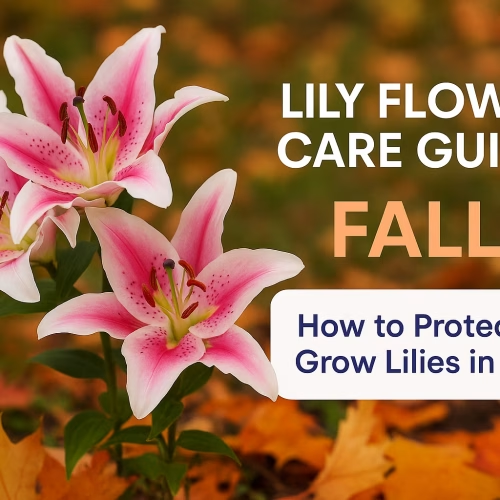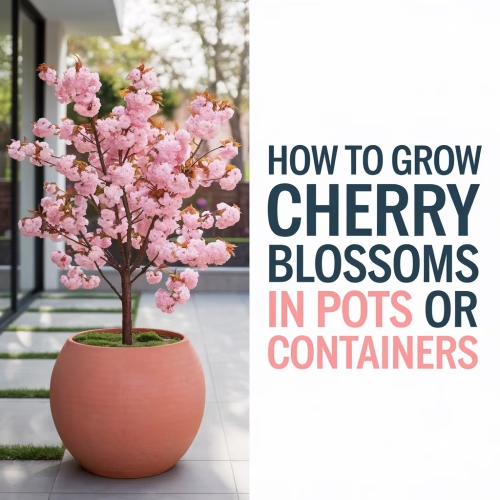Slow Living: 9 Lifestyle Tips to Help You Stress Less
Ever feel like life is moving at warp speed and you’re just trying to keep up? You’re not alone. In our always-on, hustle-obsessed culture, we’ve forgotten something essential: life isn’t meant to be a race.
I used to pride myself on being busy. My calendar was packed, my to-do list never-ending, and my stress levels? Through the roof. Then one day, I found myself crying over spilled coffee because it was the final straw in an already overwhelming morning. That’s when I realized something had to change.
Enter slow living – a lifestyle philosophy that’s not about doing everything in slow motion, but about being intentional with your time, energy, and attention. It’s about choosing quality over quantity, presence over productivity, and peace over perpetual busyness.
In this article, I’ll share nine practical tips that have helped me embrace slow living and significantly reduce my stress levels. These aren’t complicated strategies that require a complete life overhaul. They’re simple, doable changes that anyone can implement starting today.
Key Takeaways
—
1. 🌅 Start Your Morning Without Your Phone
Here’s a challenge: how long after waking up do you reach for your phone? If you’re like most people, it’s probably within the first five minutes. I used to check my phone before my eyes were fully open, immediately flooding my brain with emails, news, and social media.
Why this matters: Starting your day with digital stimulation activates your stress response before you’ve even gotten out of bed. It puts you in reactive mode instead of intentional mode.
How to implement this tip:
I now spend my first hour awake completely phone-free, and it’s transformed my mornings. Instead of feeling anxious and overwhelmed, I feel grounded and ready to face the day on my own terms.
For more ideas on creating peaceful morning routines, check out the best morning routine for period days, which offers great self-care strategies that work any day of the month.
—
2. 🍽️ Practice Mindful Eating
When was the last time you actually tasted your food? Not just chewed and swallowed while scrolling through Instagram or watching Netflix, but truly savored each bite?
Mindful eating is a cornerstone of slow living. It’s about engaging all your senses during meals and treating eating as an experience rather than a task to rush through.
Benefits of mindful eating:
| Benefit | Impact |
|———|——–|
| Better digestion | Your body processes food more efficiently when you’re relaxed |
| Increased satisfaction | You feel more fulfilled with less food |
| Reduced stress | Taking breaks throughout the day lowers cortisol levels |
| Greater appreciation | Food becomes a source of joy, not just fuel |
Simple ways to eat more mindfully:
I’ve found that even just one mindful meal per day makes a significant difference in my overall stress levels. It creates a natural pause in my day where I can reset and recharge.
—
3. 📵 Establish Digital Boundaries
Our devices are designed to be addictive. Every notification, ping, and buzz is engineered to grab our attention and keep us engaged. But this constant connectivity is exhausting our nervous systems.
The statistics are sobering: The average person checks their phone 96 times per day – that’s once every 10 minutes! No wonder we’re stressed.
Creating healthy digital boundaries:
I deleted social media apps from my phone and only check them on my computer during designated times. This single change has given me back hours of my life and significantly reduced my anxiety.
—
4. 🚶♀️ Embrace Slow Movement
Exercise doesn’t have to mean high-intensity interval training or running marathons. In fact, gentle, mindful movement can be far more beneficial for stress reduction.
Slow movement practices help you reconnect with your body, calm your nervous system, and create space for reflection.
Types of slow movement to try:
“In a world that values speed, choosing to move slowly is a radical act of self-care.”
I’ve replaced some of my intense workouts with long, leisurely walks. Not only has this reduced my physical stress (my body was exhausted from overtraining), but it’s also given me time to think, process emotions, and simply be present.
—
5. 📝 Create Simple Daily Rituals
Rituals are different from routines. While routines are about efficiency, rituals are about intention and meaning. They’re small ceremonies that anchor your day and create pockets of peace.
Morning rituals might include:
Evening rituals might include:
The key is consistency and intention. These rituals signal to your brain that it’s time to shift gears, helping you transition between different parts of your day with more ease.
—
6. 🧘♀️ Build in Buffer Time
One of the biggest sources of stress in modern life is the feeling of being constantly rushed. We schedule back-to-back meetings, run from one commitment to another, and never give ourselves breathing room.
Buffer time is the antidote. It’s intentional white space in your calendar that allows for transitions, unexpected delays, and simply being human.
How to create buffer time:
I used to pride myself on fitting as much as possible into my day. Now, I intentionally leave gaps. These buffers have become some of my favorite parts of the day – moments to breathe, reflect, or just stare out the window.
—
7. 🌿 Simplify Your Environment
Our physical spaces have a profound impact on our mental state. Clutter creates cognitive overload, making it harder to relax and focus.
Slow living embraces simplicity and intentionality in our surroundings. This doesn’t mean your home needs to look like a minimalist showroom, but it does mean being thoughtful about what you keep in your space.
Steps to simplify your environment:
I’ve found that having period essentials organized in one place and maintaining healthy period habits becomes so much easier when my space is simplified and organized.
The one-in-one-out rule:
For every new item you bring into your home, remove one item. This keeps clutter from accumulating and makes you more intentional about purchases.
—
8. 🎯 Focus on Single-Tasking
Multitasking is a myth. What we call multitasking is actually rapid task-switching, and it’s incredibly stressful for our brains. Each time we switch tasks, there’s a cognitive cost – it takes time and energy to refocus.
Single-tasking is the practice of giving your full attention to one thing at a time. It’s harder than it sounds in our distraction-filled world, but it’s also incredibly rewarding.
Benefits of single-tasking:
How to practice single-tasking:
When I’m writing, I close my email, silence my phone, and use a distraction-free writing app. This focused approach means I get more done in less time, with better results and less stress.
—
9. 💆♀️ Prioritize Rest and Self-Care
In hustle culture, rest is often seen as laziness. But here’s the truth: rest is productive. It’s when our bodies repair, our minds process information, and our creativity flourishes.
Slow living means giving yourself permission to rest without guilt. It means recognizing that you’re a human being, not a human doing.
Different types of rest you need:
| Type of Rest | What It Looks Like |
|————–|——————-|
| Physical | Sleep, naps, gentle movement, massage |
| Mental | Breaks from problem-solving, meditation, time in nature |
| Sensory | Reducing screen time, quiet environments, closing your eyes |
| Creative | Consuming art, spending time in beautiful spaces, playing |
| Emotional | Therapy, journaling, meaningful conversations |
| Social | Alone time for introverts, quality time with loved ones |
| Spiritual | Prayer, meditation, time in nature, connection to purpose |
Building rest into your life:
I used to feel guilty about resting. Now I understand that rest isn’t something I earn through productivity – it’s a fundamental human need. Following period health tips and the best period hygiene tips has also taught me to honor my body’s natural rhythms and need for rest.
—
Creating Your Slow Living Practice
You don’t need to implement all nine of these tips at once. In fact, trying to do so would be the opposite of slow living! Instead, choose one or two that resonate most with you and start there.
Your slow living starter plan:
Week 1-2: Choose one tip and practice it daily. Notice how it makes you feel.
Week 3-4: Add a second practice while maintaining the first.
Month 2: Reflect on what’s working and what isn’t. Adjust as needed.
Month 3+: Gradually incorporate additional practices as the earlier ones become habits.
Remember, slow living is a practice, not a destination. There will be days when life speeds up, when you fall back into old patterns, when you check your phone first thing in the morning. That’s okay. What matters is gently bringing yourself back to your intentions.
—
The Ripple Effects of Slowing Down
When you embrace slow living, the benefits extend far beyond just feeling less stressed. You might notice:
“Almost everything will work again if you unplug it for a few minutes, including you.” – Anne Lamott
—
Overcoming Common Obstacles
“I don’t have time for slow living”
This is the most common objection, and I get it. But here’s the paradox: slow living actually gives you more time. When you’re intentional about how you spend your energy, you waste less time on things that don’t matter. You’re more focused, more efficient, and more present.
“My job/family/life is too demanding”
Slow living isn’t about changing your external circumstances (though you might choose to do that eventually). It’s about changing your relationship with those circumstances. You can practice slow living principles even in a demanding job or busy family life.
“I feel guilty when I’m not productive”
This is cultural conditioning, and it takes time to unlearn. Start by redefining productivity. Rest is productive. Joy is productive. Connection is productive. You’re not a machine designed solely for output.
—
Conclusion: Your Invitation to Slow Down
Living slowly in a fast-paced world is an act of courage. It requires going against the grain, setting boundaries, and trusting that you’re enough without constant achievement.
But I promise you, it’s worth it.
Since embracing slow living, I’ve experienced less anxiety, better sleep, deeper relationships, and a genuine sense of peace I never thought possible. I’m not perfect at it – some days I still fall into old patterns of rushing and overcommitting. But now I have tools to come back to center.
Your journey with slow living will be unique to you. Maybe you’ll start with phone-free mornings. Maybe you’ll begin with mindful eating or creating simple rituals. Perhaps you’ll add some creative elements to your routine, like trying October doodles to spice up your bullet journal or exploring creative October doodles for a cozy fall vibe.
Whatever you choose, start small and be gentle with yourself. Slow living isn’t another thing to add to your to-do list or another way to feel inadequate. It’s an invitation to come home to yourself, to remember what really matters, and to stress less while living more.
Your next steps:
The world will keep spinning at its frantic pace. But you? You get to choose your own rhythm. You get to decide that your peace matters more than your productivity. You get to live slowly, intentionally, and fully.
Welcome to slow living. Your more peaceful, present life is waiting. 🌿
—
SEO Meta Title and Description
Meta Title: Slow Living: 9 Lifestyle Tips to Stress Less in 2025
Meta Description: Discover 9 practical slow living tips to reduce stress and find peace. Learn to embrace mindful routines, digital boundaries, and intentional living today.
—
Image Prompts
IMAGE_PROMPT_1: Cover image in 1536×1024 landscape format. Soft, peaceful scene of a woman in comfortable clothes sitting by a window with morning light, holding a warm cup of tea, with a cozy blanket. Peaceful, muted color palette of cream, soft beige, and sage green. On the right side, overlay the text “SLOW LIVING: 9 Lifestyle Tips to Help You STRESS LESS” in modern, bold typography. Emphasize “SLOW LIVING” in large navy blue letters, “STRESS LESS” in warm orange, and the rest in white. Clean, minimal design with plenty of negative space. Ensure all text is perfectly centered, readable, and not cut off at edges.
IMAGE_PROMPT_2: Landscape infographic 1536×1024 showing “Benefits of Mindful Eating” with four quadrants. Each quadrant has an icon and text: “Better Digestion” with stomach icon, “Increased Satisfaction” with happy face icon, “Reduced Stress” with calm wave icon, “Greater Appreciation” with heart icon. Use soft color palette of sage green, cream, and coral. Modern, clean design with readable sans-serif fonts. Title at top in bold. Ensure all text is well-sized, perfectly aligned, and nothing is cut off at edges.
IMAGE_PROMPT_3: Square image 1024×1024 showing a peaceful flat lay of a morning ritual scene: journal with pen, small potted succulent, lit candle, cup of herbal tea, and soft linen fabric. Overhead view with natural lighting. Muted, calming color palette. Minimalist and aesthetically pleasing. No text overlay. Ensure all elements are fully visible and centered within the square format.
IMAGE_PROMPT_4: Landscape infographic 1536×1024 titled “7 Types of Rest You Need” showing seven icons in a circular arrangement around the center. Each icon represents: Physical (bed), Mental (brain), Sensory (eye), Creative (palette), Emotional (heart), Social (people), Spiritual (lotus). Each with one-word label below. Center text reads “REST IS PRODUCTIVE”. Use calming blues, purples, and cream colors. Modern, clean typography. Ensure all text is readable, properly sized, well-aligned, and not cut off at any edge.
IMAGE_PROMPT_5: Square image 1024×1024 showing hands holding a smartphone with all notifications turned off (visible on screen), surrounded by natural elements like plants, flowers, and soft fabric. Soft focus background. Represents digital boundaries and unplugging. Warm, natural lighting. Peaceful aesthetic. Ensure all elements fit perfectly within square boundaries and nothing is cropped.
IMAGE_PROMPT_6: Landscape image 1536×1024 showing a serene nature walk scene: a peaceful forest path with dappled sunlight, soft focus, person walking slowly in the distance (back view), surrounded by trees. Calming green and golden tones. Represents slow movement and mindfulness in nature. Dreamy, peaceful atmosphere. Ensure entire scene is well-composed and fits perfectly within landscape format with nothing cut off.




